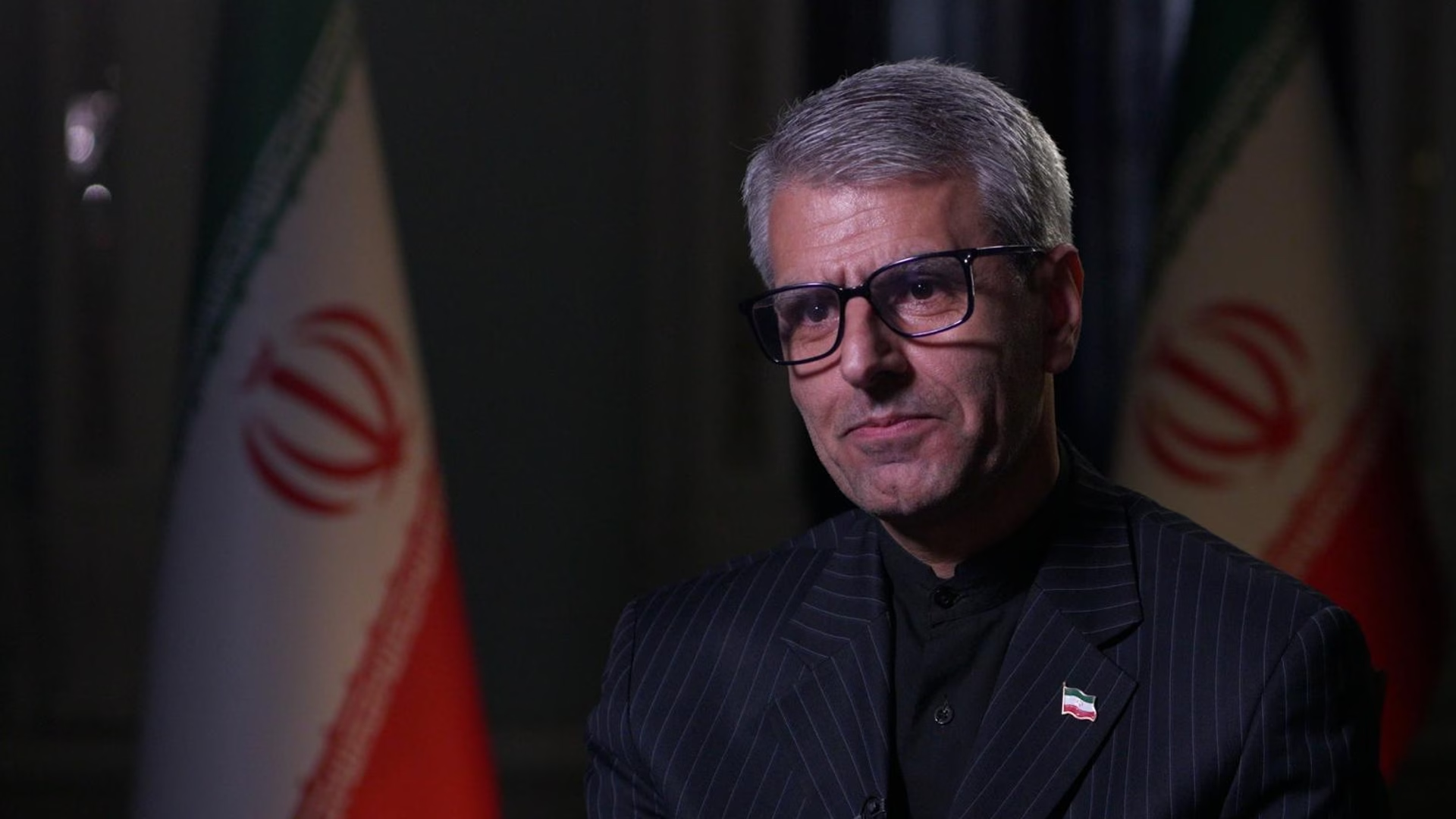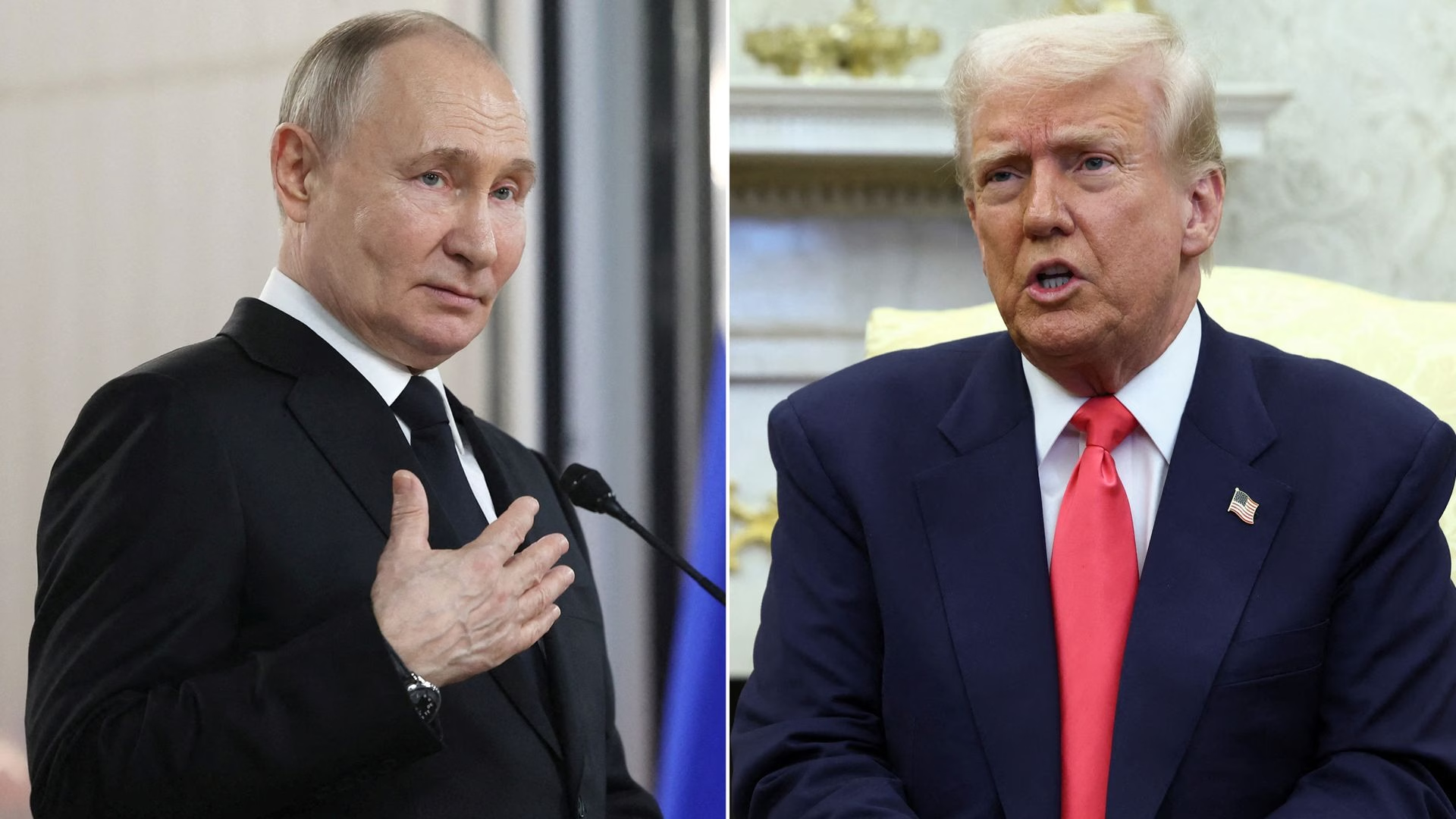
Islamabad, Pakistan – India and Pakistan fired missiles at each other’s military bases on Saturday morning, the latest escalation in their rapid drift towards an all-out war.
Pakistan accused India of carrying out attacks inside its territory for the fourth consecutive night, launching ballistic missile strikes on at least three air bases. Islamabad said that in response, it launched a major military campaign, “Operation Bunyan Marsoos” (Arabic for “a structure made of lead”) targeting at least six Indian military bases.
list 1 of 4
‘Slippery slope’: How will Pakistan strike India as tensions soar?
list 2 of 4
India-Pakistan tensions: A brief history of conflict
list 3 of 4
India, Pakistan exchange claims over drone strikes
list 4 of 4
Could India, Pakistan use nuclear weapons? Here’s what their doctrines say
end of list
India, in turn, accused Pakistan of being the aggressor. Indian military officials claimed Pakistan had targeted several Indian military bases and that its missiles into Pakistani territory were in response.
Yet, regardless of who hit the other first on May 10, the very fact that India and Pakistan had struck each other’s military bases over such a wide swath of territory, well beyond Kashmir – the disputed region that they each partly control – means that the conflict has now veered into almost unknown territory.
Advertisement
Never have the South Asian rivals attacked each other on this scale outside the four wars they have fought.
Here is what we know so far about India’s attacks, Pakistan’s response, what both countries and global powers like the United States are saying, and the background to this intensifying conflict.

What happened on the morning of May 10, according to Pakistan?
Pakistan said that India launched a salvo of drones into Pakistan, followed by ballistic missile strikes on at least three major airbases.
The Pakistani bases India targeted are:
- Nur Khan airbase: Located near Chaklala, Rawalpindi, it serves as a key operational and training hub. It houses important Pakistan Air Force commands, and supports transport, logistics and VIP flight operations.
- Murid airbase: Located in Chakwal, roughly 120km (75 miles) from Islamabad. It is a vital forward-operating base for the Pakistan Air Force. It plays a crucial role in air defence and combat readiness.
- Rafiqui airbase: Located in Shorkot, Punjab, the base hosts fighter squadrons.
Pakistan said that in response, it launched aerial attacks against multiple Indian military bases. The bases known to have been targeted are:
- Udhampur airbase: Located in Indian-administered Kashmir, Udhampur is also the headquarters of the Indian Army’s Northern Command.
- Pathankot airbase: The base in Indian Punjab is a central part of India’s frontline air force operations and was targeted by armed fighters in a 2016 attack in which six Indian soldiers were killed. India blamed that attack on the Pakistan-based Jaish-e-Mohammad.
- Drangyari artillery gun position: Drangyari is in Indian-administered Jammu and Kashmir.
- Uri field support depot: Uri, in Indian-administered Kashmir, is also home to a major Indian Army base that was attacked in 2016 by armed fighters who killed 19 Indian soldiers. India, which blamed Pakistan-based Jaish-e-Mohammad for the attack, launched what it described as “surgical strikes” in Pakistan-administered Kashmir.
- Nagrota: The town in Indian-administered Kashmir is home to a storage site for the Brahmos missiles jointly designed and made by India and Russia.
- Beas: Located in Indian Punjab, the site is a storage facility for the Brahmos missile.
- Adampur air base: Located in Indian Punjab, the base is home to an S-400 missile defence system that India bought from Russia.
- Bhuj air base: The base is located in Gujarat, the home state of Indian Prime Minister Narendra Modi.
Advertisement
What has India said?
At a media briefing, Indian Foreign Secretary Vikram Misri accused Pakistan of provocations and escalations, claiming that New Delhi was only responding to its neighbour’s actions.
He was joined by Colonel Sofia Qureshi of the Indian Army and Wing Commander Vyomika Singh of the Indian Air Force, who shared New Delhi’s version of events.
Pakistan, Qureshi said, used “drones, long-range weapons, loitering munitions and fighter aircrafts to target civilian areas and military infrastructure”.
“Pakistan military also resorted to air intrusions using drones and firing of heavy calibre weapons along the Line of Control,” she said. Loitering munitions, also known as suicide drones, are remote-controlled and designed to crash into their targets. The Line of Control is the de facto border between Indian and Pakistani-administered Kashmir.
While India said it had shot down most incoming missiles and drones, Qureshi and Singh conceded that the air force bases in Udhampur, Pathankot, Adampur and Bhuj did suffer “limited damage”.
India, however, rejected suggestions that any bases had suffered any significant damage, with the military releasing time-stamped photos of the facilities in support of its assertion. Pakistan’s military had on Thursday claimed that the Udhampur and Pathankot bases had been “destroyed.”
Indian officials said at least five people had been killed by Pakistani missile fire on Saturday.
What else happened on May 10?
As the neighbours traded missile fire and allegations, US Secretary of State Marco Rubio spoke with General Syed Asim Munir, Pakistan’s army chief and widely regarded as the country’s most powerful figure, as well as with the Indian foreign minister, S Jaishankar.
Advertisement
According to the US State Department, Rubio urged both parties to seek ways to “deescalate” and offered American assistance in launching constructive dialogue to avoid further conflict.
How did India and Pakistan get to the brink of war?
Pakistan’s military response on Thursday followed four days of consecutive Indian attacks inside its territory and came two weeks after a deadly assault on tourists in the scenic town of Pahalgam in Indian-administered Kashmir on April 22.
The attack killed 26 men, all civilians. India blamed armed groups it alleges are backed by Pakistan, a charge Islamabad has denied, calling instead for an “impartial, transparent” investigation that New Delhi has rejected.
Multiple witness accounts suggest the gunmen segregated the men from the women, then selected and killed non-Muslims.
India initiated strikes on May 7, targeting areas inside Pakistan and Pakistan-administered Kashmir. It claimed to have destroyed “terrorist infrastructure” and eliminated at least “100 terrorists”.
It called its attacks Operation Sindoor, a reference to the vermilion – sindoor in Hindi – the red pigment many married Hindu women apply to their foreheads. The mission’s name was an allusion to the manner in which gunmen killed tourists in Pahalgam.
Pakistan reported that the Indian strikes killed 33 people, including several children, and injured more than 50. It denied that any of the dead were fighters, as India claimed.
As the attacks unfolded, Pakistan deployed its air force in response, engaging in a battle with the Indian Air Force (IAF). Pakistan’s military claimed it downed five Indian jets, including three Rafales, the French-made aircraft considered the IAF’s most advanced assets. India has neither confirmed nor denied the losses.
Advertisement
Drone warfare intensifies
India responded by deploying drones and loitering munitions on May 9 and 10, hitting at least a dozen targets across Pakistan, including major urban centres such as Karachi, Lahore and Rawalpindi.
India said the drone strikes were in response to Pakistan’s use of drones, a claim Islamabad continues to reject.
“There is no credence to their claims. They continue to lie. Their allegation is false. Otherwise, where is their evidence?” Lieutenant General Ahmed Sharif Chaudhry, Pakistan’s military spokesperson, told Al Jazeera during a news briefing in Rawalpindi on Friday.
He added that Pakistan’s response to “Indian aggression” would come at a “time, method, and place of our choosing”.
That time came on the morning of May 10.
What does Operation Bunyan Marsoos mean?
Pakistan’s operation is titled Bunyan Marsoos, an Arabic phrase that translates as “a structure made of lead”.
The phrase originates from the Quran: “Truly God loves those who fight in His cause in battle array, as if they were a solid cemented structure.”
In its Quranic context, the phrase symbolises unity and strength among believers fighting for a righteous cause.
What comes next?
Experts have repeatedly warned of the need for immediate de-escalation between the nuclear-armed neighbours before the situation becomes “irreversible”.
India said on May 10 that it was willing to stop the cycle of escalation if Pakistan reciprocated.
But Kamran Bokhari, senior director at the New Lines Institute for Strategy and Policy, said Indian strikes on Pakistani airbases had dramatically escalated the conflict.
Advertisement
“With Pindi being hit and other airbases such as the one in Sargodha, the war has taken a turn for the worse,” he told Al Jazeera. “We are now looking at a much bigger-scale war.”
Muhammad Faisal, a South Asia security analyst at the University of Technology Sydney, said Pakistan was left with little choice but to respond forcefully.
“Pakistan can employ its latest jets in standoff mode or launch long-range missile strikes on Indian airbases that bypass air defences. During the last three days, both sides have significantly mapped each other’s air defences, and now the next round of escalation is here,” he told Al Jazeera.
British Caribbean News


